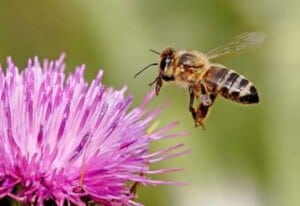White oak trees, with their majestic stature and enduring charm, have long captured the imagination of nature enthusiasts and casual admirers alike. In this exploration, we’ll delve into the intricate details of these remarkable trees, understand their characteristics, explore their different types, discover their native locations, and unravel their myriad uses.
A tree that reaches towards the sky, its branches adorned with leaves that shimmer in the sunlight. The white oak tree, scientifically known as Quercus alba, embodies this picturesque image. These trees are renowned for their towering height, often reaching 100 feet, creating a canopy of leaves that provides shade and shelter to the creatures below. Their bark, a blend of grays and browns, adds to their distinctive appearance, making them easily recognizable in the wilderness. Their branches provide shade, their acorns feed wildlife, and their fall colors dazzle everyone who sees them.
While the term “white oak” encompasses several species, each possesses unique traits. The white oak family includes over 200 different species, each with its charm. Some white oaks display deeply lobed leaves, resembling the fingers of a hand, while others boast smooth-edged leaves, showcasing the diversity within this family. This variety not only captivates the eye but also emphasizes the adaptability of these trees to different environments.
White oak trees are native to North America, thriving in the eastern regions of the United States and Canada. These trees have deep roots in the cultural and historical tapestry of indigenous communities, symbolizing strength, wisdom, and endurance. Native Americans utilized white oak wood to craft tools, build canoes, and fashion intricate baskets, honoring the tree’s versatile nature. Over the centuries, white oak wood has been a favorite among carpenters and craftsmen due to its durability and resilience, finding its way into constructing furniture, barrels, and even ships.
As we marvel at the white oak tree’s splendor, it becomes imperative to understand the importance of conservation. These magnificent trees not only enrich our forests but also contribute to the delicate balance of our ecosystem. By appreciating their beauty, respecting their significance, and promoting sustainable practices, we can ensure that future generations can continue to stand in awe beneath the sprawling branches of these timeless giants. So, the next time you encounter a white oak tree, remember the intricate tales it weaves, connecting the past, present, and future in a harmonious dance with nature.
As a master gardener, my fascination with white oak trees has deepened through extensive research. In this comprehensive guide, I’ll unravel the mysteries surrounding these majestic trees, offering valuable insights into their characteristics, varieties, native habitats, and practical uses. Additionally, I’ll share expert tips on nurturing and cultivating white oak trees, ensuring their timeless beauty graces your landscape effortlessly.

Botanical Name: Quercus alba
Common Name: White Oak Tree, Stave Oak
Family: Fagaceae
Plant Type: Deciduous Tree
Hardiness Zones: 3 to 9
Sun Exposure: Full Sun to Partial Shade
Soil Type: Well-Drained, Moist, Sandy, Clay, Loamy
Soil pH: Neutral to Acidic (pH 6.0 to 7.0)
Maturity: Takes Several Decades to Mature Fully
Height: 60 to 100 Feet
Width: 40 to 70 feet
Spacing: 40 to 50 Feet Apart
Bloom Time: Spring
Flower Color: Yellow-Green, Inconspicuous
Bark: Gray to light tan, with thick overlapping plates or thick ridges
Twig: Red-brown to somewhat gray, even a bit purple at times, hairless and often shiny; multiple terminal buds are red-brown, small, rounded (globose) and hairless
Leaf: The new leaves emerge pinkish, changing to dark green in summer and wine red in fall. The leaf margins are rounded.
Native Area: Eastern United States, Canada
White Oak Tree Care
Caring for white oak trees involves understanding their natural habitat and providing them with the conditions to thrive. These majestic trees, belonging to the Fagaceae family, require attention to detail and a nurturing touch. It is a long-lived tree for large landscapes and parks. To start, ensure you plant them in well-drained soil, preferably a mix of loamy, sandy, and clay soils. White oak trees flourish in full sun to partial shade, allowing them to absorb the sunlight they need for photosynthesis. Adequate spacing between trees, approximately 40 to 50 feet apart, grants them ample room to spread their branches and grow tall.
Watering is crucial, especially during their initial years. Young white oak trees benefit from regular watering, keeping the soil moist. However, once established, they showcase remarkable drought tolerance. Pruning is essential to remove dead or diseased branches, promoting healthy growth and maintaining an attractive shape. Mulching around the tree’s base helps retain soil moisture, suppress weeds, and regulate temperature. Additionally, applying a layer of organic mulch enriches the soil as it decomposes, providing essential nutrients to the tree.
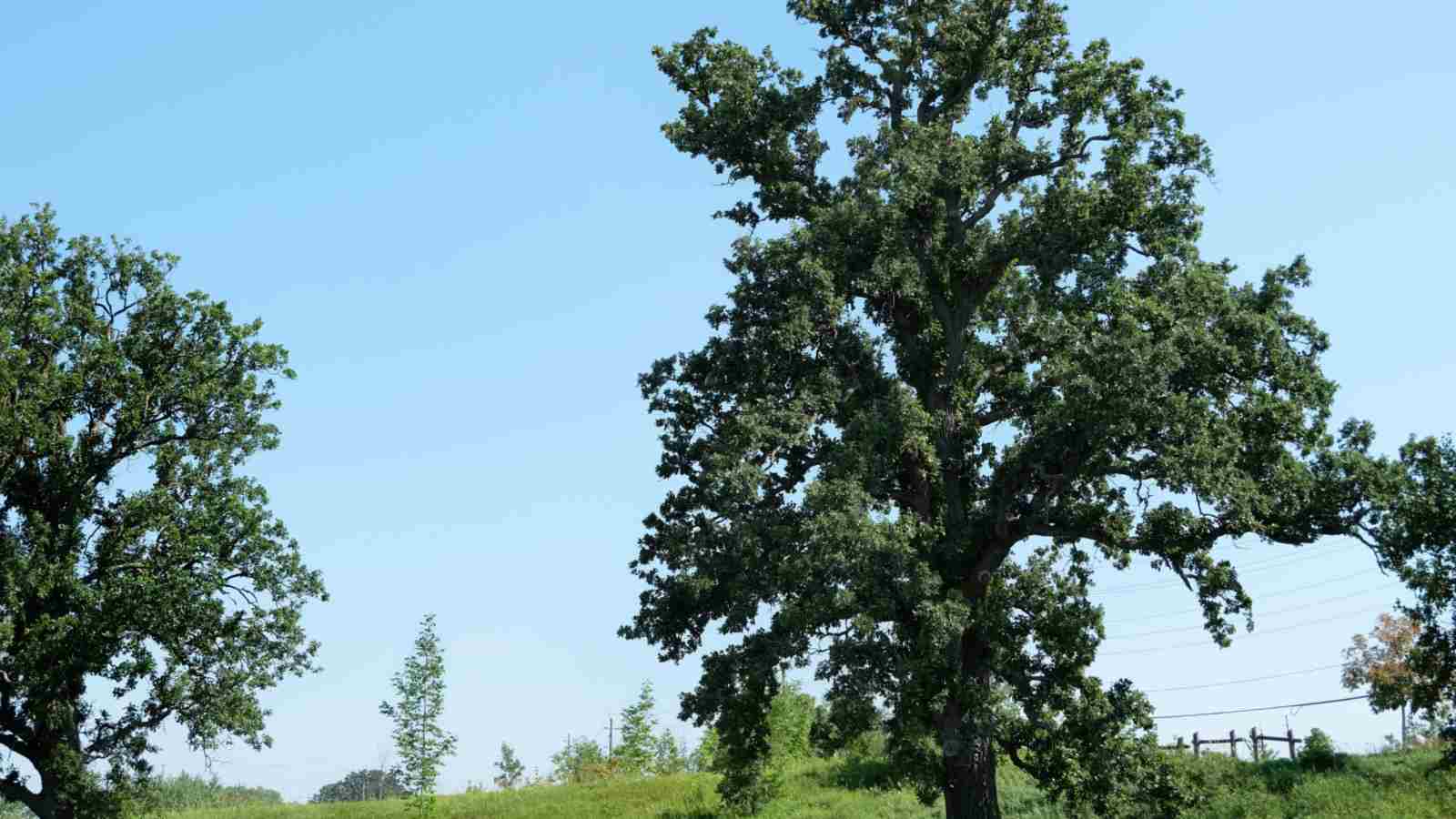
Understanding the blooming and fruiting patterns of white oak trees is vital for their care. While their inconspicuous yellow-green flowers bloom in spring, the tree produces acorns as fruit, serving as a vital food source for various wildlife species. Regularly inspect the tree for signs of pests or diseases, addressing any issues promptly to maintain its vitality.
Light
When it comes to the light requirements for white oak trees, they generally thrive in full sun to partial shade. Providing them with ample sunlight is crucial for their growth and overall health. In full sun, these trees develop strong, sturdy branches and lush foliage. However, they can tolerate partial shade, especially during the hot afternoon hours. It’s essential to plant them in a location where they receive at least 6 hours of direct sunlight daily. Proper exposure to sunlight ensures that the white oak tree can carry out photosynthesis efficiently, enabling it to produce the energy it needs to grow and flourish. Regularly assess the surrounding landscape to ensure there are no obstructions that might hinder sunlight penetration, allowing your white oak tree to bask in the natural light it requires for optimal development.
Soil
White oak trees thrive in well-drained soil that retains moisture without becoming waterlogged. Ideally, the soil should be a mix of loamy, sandy, and clay textures, providing a balanced environment for the tree’s roots to establish themselves. While these trees are relatively adaptable, they prefer slightly acidic soil to neutral soil with a pH ranging from 6.0 to 7.0. Ensuring the soil is rich in organic matter, and nutrients can significantly enhance the tree’s overall health and vitality. Regularly monitoring the soil’s moisture levels and providing adequate drainage are key factors in maintaining a thriving white oak tree in your garden or landscape.
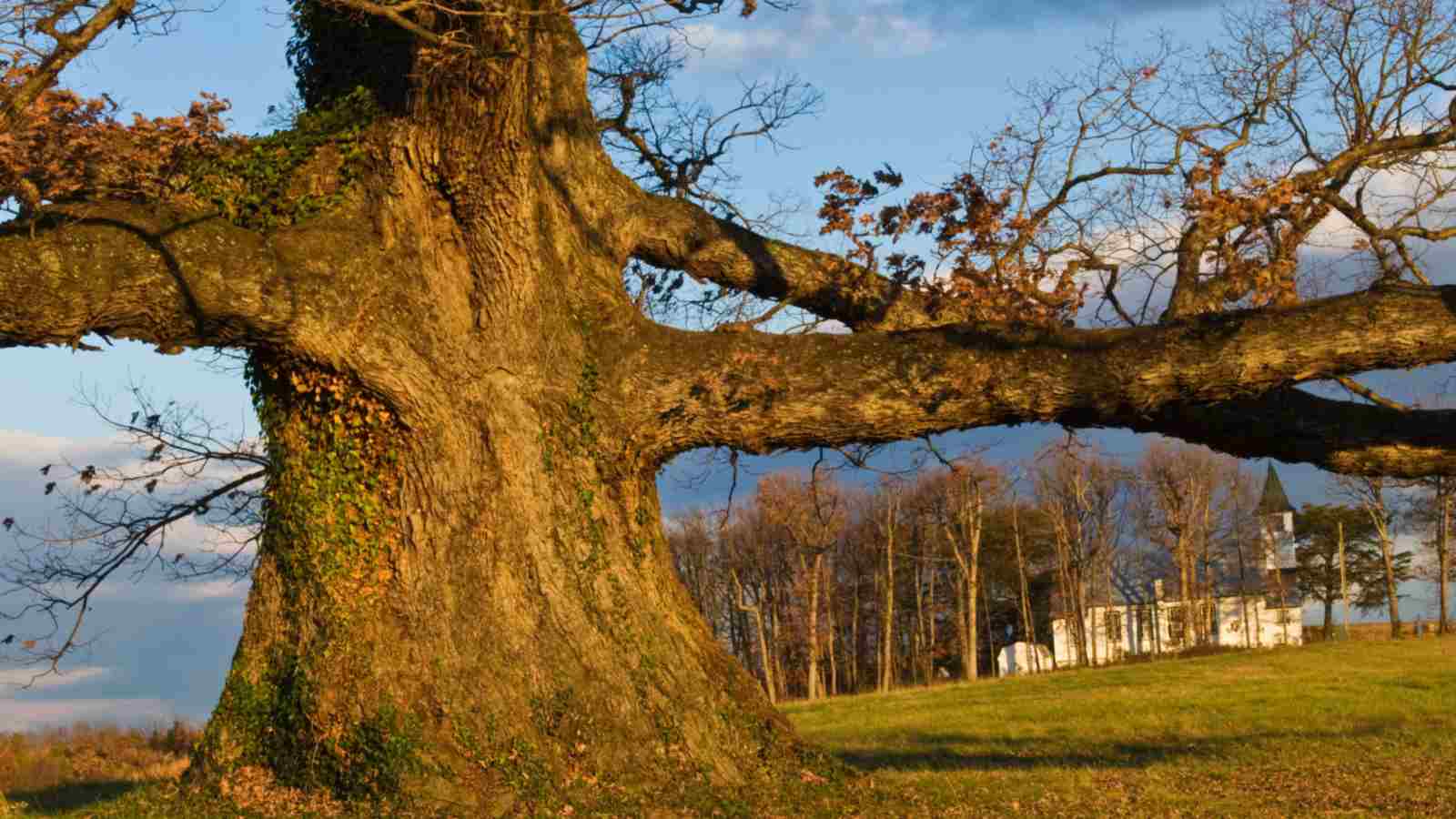
Water
White oak trees generally have moderate water needs, especially during their initial years of growth. Adequate watering during dry spells and hot summer months is essential to help young trees establish deep root systems. However, mature white oaks exhibit remarkable drought tolerance once their roots are well-established. It’s advisable to monitor the soil moisture levels regularly, ensuring the tree receives a consistent water supply without becoming waterlogged. Striking a balance between hydration and proper drainage is key to maintaining the health and vitality of your white oak tree. Remember, a well-hydrated tree stands strong against various environmental challenges, ensuring its longevity and majestic presence in your landscape.
Temperature and Humidity
White oak trees, hardy in zones 3 to 9, thrive in a temperate climate. They are remarkably adaptable, tolerating a wide range of temperatures. While they prefer moderate humidity, they can endure varying levels without compromising their health. Providing a stable environment with consistent temperatures and moderate humidity levels will encourage the white oak tree to flourish. Regularly monitoring local weather conditions and adjusting care accordingly can help maintain a conducive environment for these majestic trees to thrive.

Fertilizer
When nurturing a white oak tree, understanding its fertilizer requirements is crucial for promoting healthy growth and longevity. White oak trees, like many other deciduous trees, benefit from a balanced and slow-release fertilizer applied during their active growing season. Typically, it’s best to fertilize white oak trees in early spring, just before new growth begins. A fertilizer with a balanced N-P-K (nitrogen, phosphorus, and potassium) ratio, such as 10-10-10 or 14-14-14, works well for these trees.
Avoid excessive use of nitrogen, as it can lead to rapid, weak growth, making the tree more susceptible to diseases and pests. Instead, opt for a fertilizer that provides a steady nutrient supply over time, aiding in developing a robust root system and lush foliage. Remember to follow the manufacturer’s guidelines regarding application rates to prevent over-fertilization, which can harm the tree rather than help it thrive. Regular monitoring of the tree’s overall health and adjusting the fertilizer regimen as needed ensures the white oak receives the essential nutrients it requires to flourish in your garden or landscape.
Pruning
Regularly inspect the tree for dead, damaged, or diseased branches and promptly remove them to prevent the spread of illness and encourage new growth. Additionally, strategic pruning can help eliminate crowded or weak branches, ensuring the tree’s structural integrity. Timing is crucial; it’s advisable to prune white oak trees during late fall or winter when they are dormant, minimizing stress and maximizing recovery. However, it’s vital to avoid excessive pruning, as white oak trees, like other species, require their canopy to photosynthesize effectively. Consulting with a professional arborist can provide valuable insights tailored to your specific white oak’s needs, ensuring a long and healthy life for these magnificent trees.
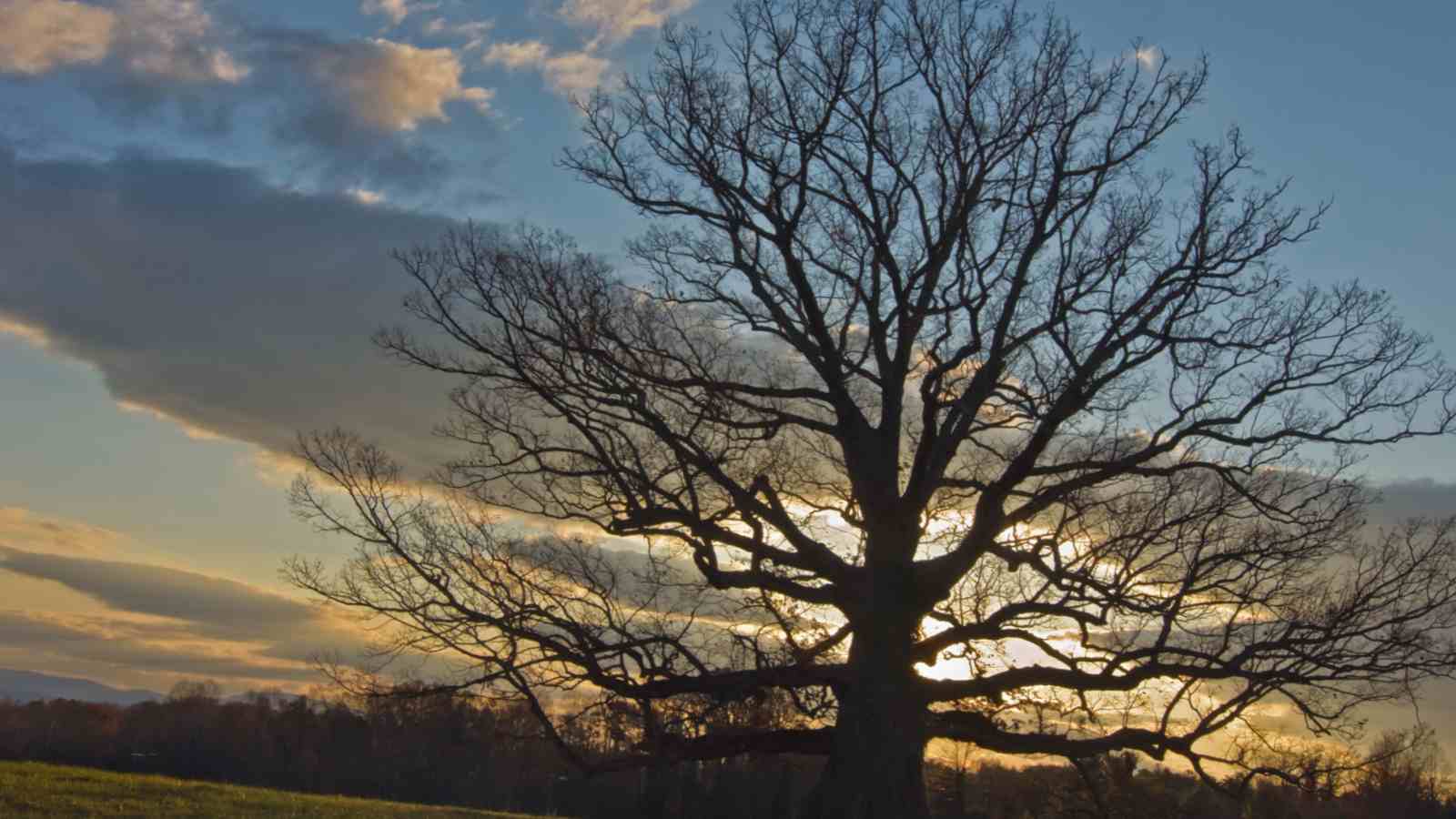
Overwintering
As the colder months approach, these hardy deciduous trees, known for their resilience, require thoughtful preparation. One of the key aspects of overwintering white oak trees involves protecting their root systems. A layer of mulch around the tree’s base, extending to the drip line, provides insulation, preventing sudden temperature fluctuations in the soil. Additionally, watering the tree adequately in late fall before the ground freezes helps to keep the roots hydrated during the winter months. Pruning any damaged or weak branches before winter arrives can also prevent breakage under the weight of snow or ice, ensuring the tree’s structural integrity. Moreover, considering the natural habitat of white oak trees, it’s important to select appropriate planting sites with good drainage to prevent waterlogging during winter, which can be detrimental to the tree’s health.
Types of White Oak Trees
White oak trees (Quercus alba) exhibit remarkable diversity in their species and cultivars, each possessing unique characteristics that make them captivating additions to any landscape. It is a member of the broad white oak group (white, bur, chinkapin, swamp white, and post oaks). This group is characterized by having rounded lobes on the leaves and acorns, which mature in a single growing season and sprout soon after they fall in the autumn. Here, we explore some notable types of the white oak group, shedding light on their distinct features and qualities.
Chinkapin Oak (Quercus muehlenbergii)
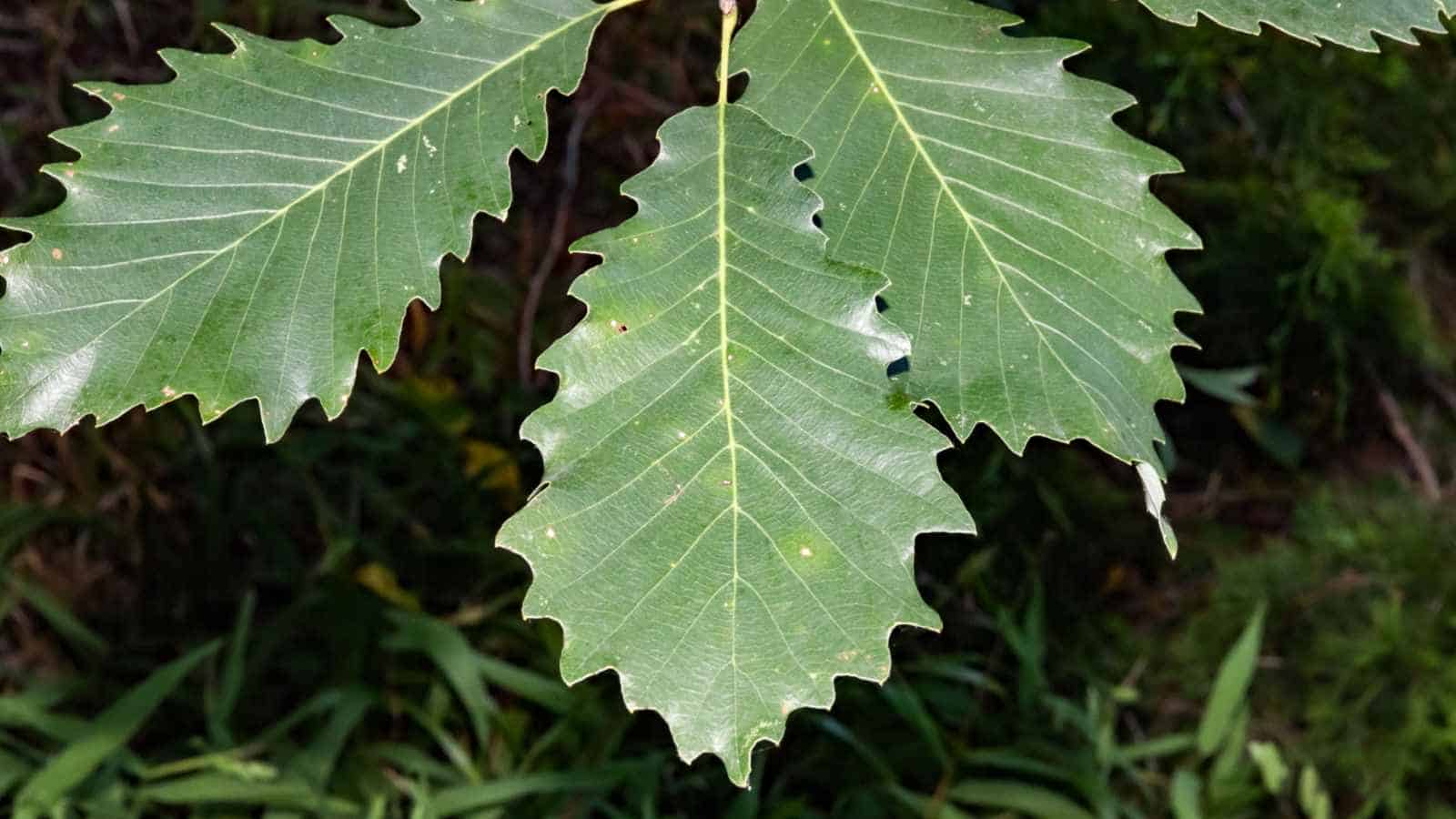
Chinkapin oak, also known as yellow chestnut oak, is a species closely related to the white oak. Its glossy, toothed leaves and slender, scaly acorns make it easily distinguishable. This tree thrives in well-drained soils and exhibits beautiful golden-brown fall foliage, adding a touch of warmth to autumn landscapes. Its tolerance for various soil types and urban conditions makes it a popular choice among landscapers and gardeners.
Bur Oak (Quercus macrocarpa)

Bur oak, a robust and long-lived species, is recognized for its massive acorns and deeply lobed leaves. This oak tree is adaptable to various soil types and can withstand harsh weather conditions, making it a hardy choice for gardens and parks. Its unique, corky bark adds to its visual appeal, while its ability to provide ample shade and support local wildlife further enhances its value in natural habitats.
Swamp White Oak (Quercus bicolor)

Swamp white oak, as the name suggests, thrives in wetter environments and is characterized by its tolerance to poorly drained soils. Its distinctive leaves feature a bluish-green hue, adding a touch of elegance to landscapes. This oak species produces acorns, an essential food source for various wildlife species. Its adaptability to moist conditions and ornamental appeal make it a sought-after choice for wetland restoration projects and garden designs near water features.
Post Oak (Quercus stellata)
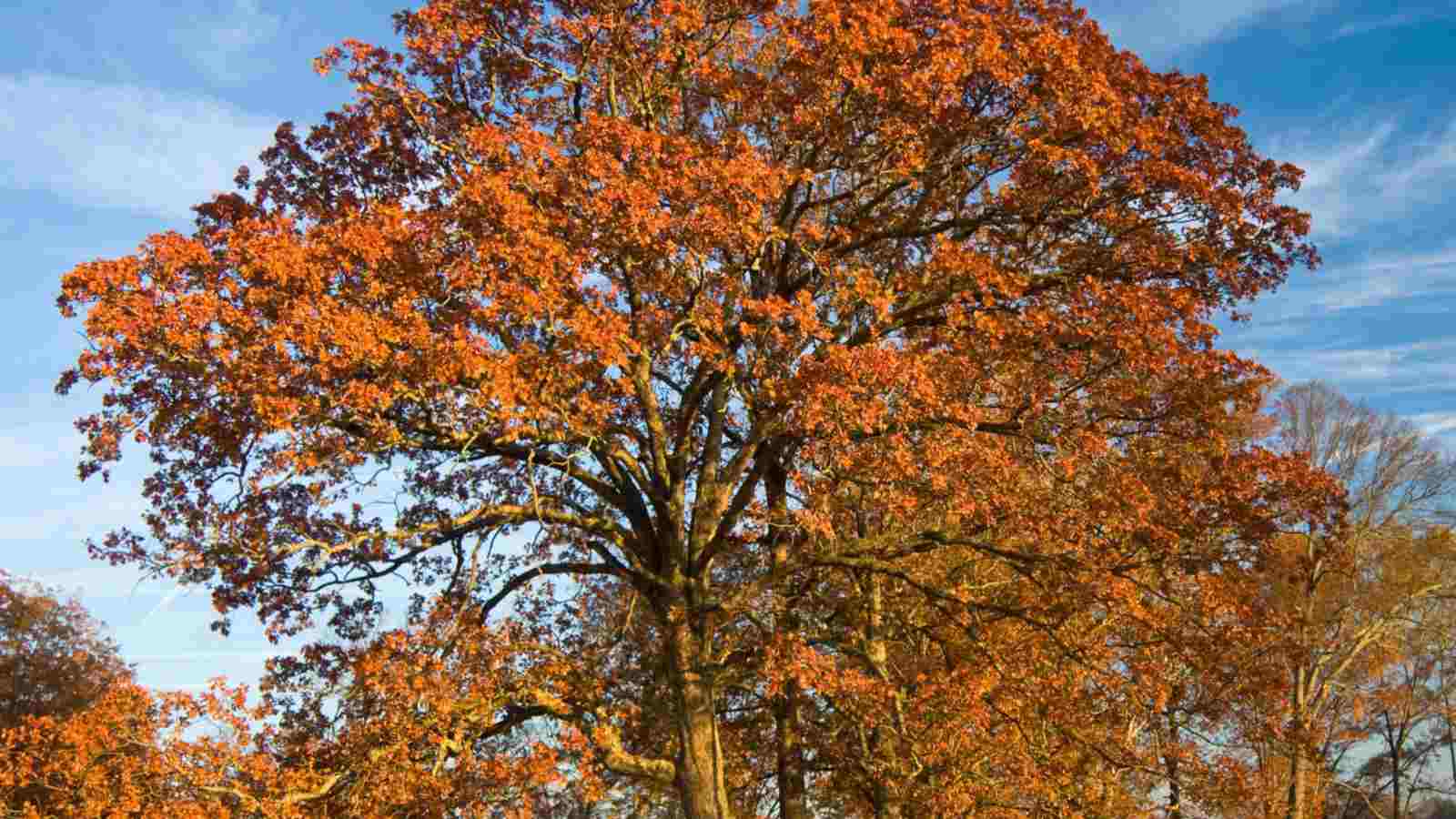
Post oak is a compact and slow-growing tree, often found in dry, upland soils. Its leaves are deeply lobed with bristle tips, producing small acorns that serve as a food source for birds and mammals. Due to its drought tolerance and ability to thrive in challenging soil conditions, post oak is a valuable choice for arid regions. Its attractive, ridged bark adds visual interest, making it a favorite among nature enthusiasts and conservationists.
Oregon White Oak (Quercus garryana)

Native to the Pacific Northwest, the Oregon white oak boasts a wide canopy and lobed leaves that turn vibrant shades of red and orange in the fall. This oak species supports various wildlife, including insects, birds, and mammals, due to its acorns and abundant foliage. Known for its adaptability and longevity, the Oregon white oak is a significant component of the region’s ecosystems. It is often used in ecological restoration projects to preserve biodiversity and enhance natural habitats.
How to Plant White Oak Tree From Seed
Have you ever dreamed of nurturing a magnificent white oak tree from a tiny seed? Well, you’re lucky because planting a white oak tree from seed can be a deeply rewarding experience. Follow these steps, and you’ll soon witness the miracle of life taking root in your backyard.
Step 1: Preparing the Seed
Start your journey by selecting healthy white oak acorns. Look for ones that are plump and firm, indicating they’re ripe and ready for planting. To prepare the seed, soak the acorns in water for a day, allowing them to absorb moisture and swell. This process mimics the natural conditions that help acorns germinate in the wild.
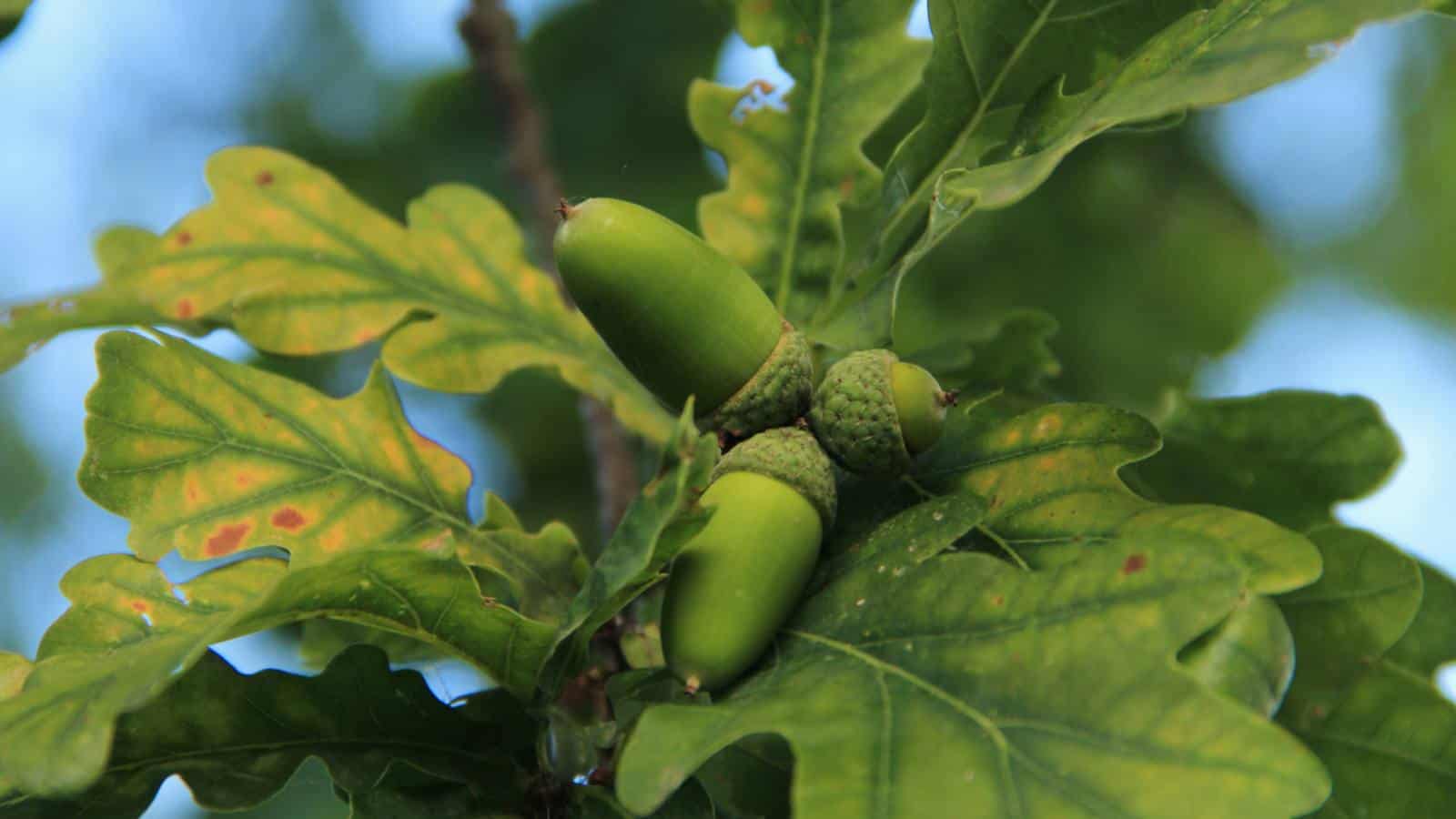
Step 2: Planting the Seed
Choose a well-draining spot in your garden or a large container for pot cultivation. Create a small hole about an inch deep and gently place the soaked acorn inside. Cover it with soil, ensuring it’s snug but not buried too deeply. Nature will do the rest, kickstarting the germination process as the seed awakens.
Step 3: Providing the Right Conditions
Patience is key when it comes to nurturing your white oak seedlings. Place the planted seed in a location with filtered sunlight and keep the soil consistently moist. Avoid overwatering, as it may lead to rot. Regularly check the moisture level and adjust your watering schedule accordingly. As your seedling grows, transplant it carefully, giving its roots ample space to spread and flourish.
Step 4: Addressing Common Pests and Problems
White oak seedlings, like any young plant, can face their fair share of challenges. Watch for pests such as aphids or caterpillars, which might harm the tender leaves. Natural remedies like neem oil or introducing beneficial insects can help keep these pests at bay. Additionally, watch for signs of diseases like powdery mildew, which can be mitigated by improving air circulation and avoiding overhead watering.
Step 5: Flowering and Aftercare
With time and care, your white oak tree will eventually blossom into a breathtaking sight. Pat yourself on the back for nurturing nature and contributing to the environment. Regular pruning can help shape the tree as it matures. The male flowers are the showiest in long catkins, and the female flowers are inconspicuous. The fruit is a 3/4- to 1-inch-long brown acorn with a lumpy cap. Provide adequate water, especially during dry spells, and mulch around the base to retain moisture. Remember, your dedication ensures the legacy of a magnificent white oak tree for generations to come.
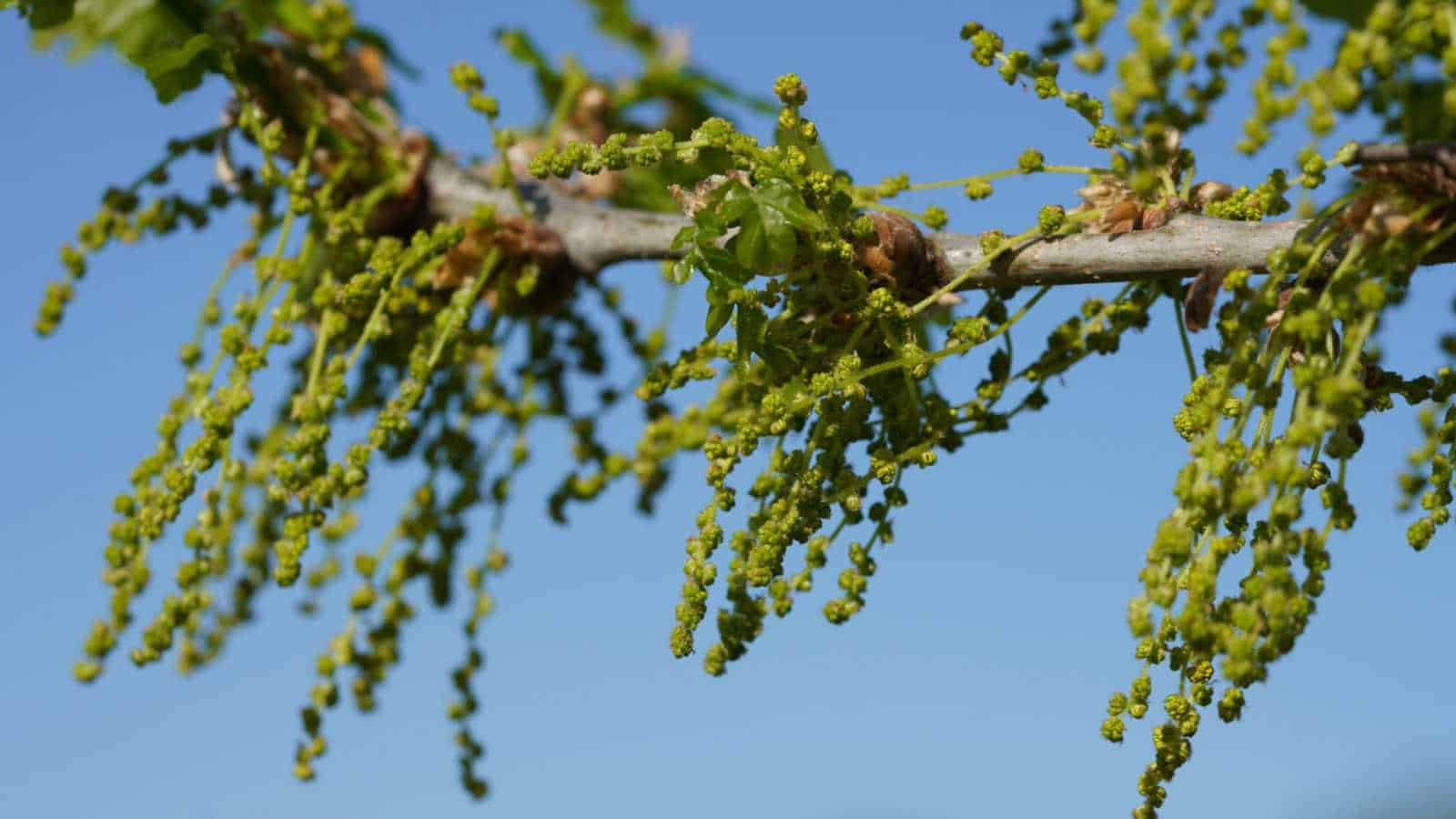
How to Propagate White Oak Tree
Have you ever wondered about the art of propagating white oak trees, bringing forth new life, and contributing to the beauty of nature? It’s an exciting journey that allows you to create a lasting impact on your surroundings. Let’s explore the steps in propagating these majestic trees, ensuring success and satisfaction in your horticultural endeavors.
Selecting a Proper Specimen
Begin your propagation journey by carefully selecting a healthy and robust white oak specimen. Look for a tree with strong branches, vibrant leaves, and a thriving overall appearance. Healthy parentage significantly influences the success of your propagation efforts. Observing the tree’s growth patterns and ensuring it’s free from diseases or pests will lay a solid foundation for your propagation project.
Cutting Preparation
Once you’ve chosen the perfect specimen, it’s time to prepare the cuttings. Opt for semi-hardwood cuttings, typically taken in late summer or early fall. Select branches that are neither too young nor too old, showing signs of maturity. With a sharp, sterilized pruner, make clean diagonal cuts just below a node, ensuring your cutting is around 6-8 inches long. Remove any excess leaves, leaving a few at the top. These cuttings will be the starting point for your new white oak trees.
Rooting
Rooting the cuttings is a crucial step in the propagation process. Prepare a well-draining rooting medium, such as a mix of sand and peat, in a suitable container. Dip the cut ends of your prepared white oak cuttings into rooting hormone powder, encouraging root growth. Insert the treated ends into the rooting medium, ensuring they are secure but not overcrowded. Place the container in a warm, shaded area, and mist the cuttings regularly to maintain humidity. With patience and care, you’ll observe the formation of delicate roots, marking the beginning of a new white oak tree’s life.
Care and Maintenance
Once your cuttings have successfully rooted and developed into young saplings, it’s time to focus on their care and maintenance. Transplant them into larger pots or directly into well-prepared soil in your garden, ensuring they receive adequate sunlight and moisture. Regular watering, especially during dry spells, is crucial for their healthy growth. Mulching around the base of the young trees helps retain moisture and suppress weeds. Additionally, pruning any dead or damaged branches encourages a strong and well-shaped canopy.
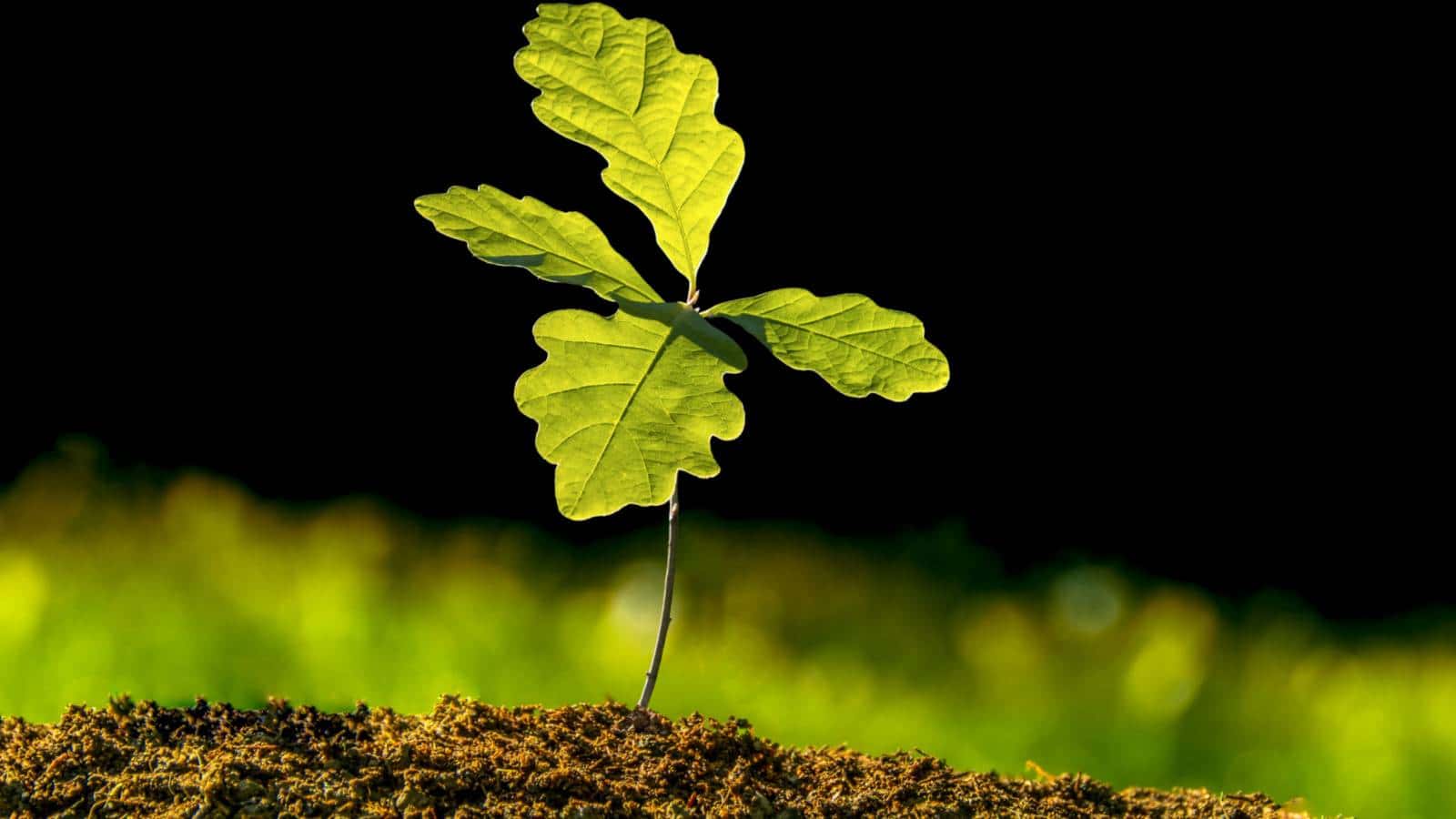
Finding a Suitable Location
As your propagated white oak trees grow, finding the right location for their permanent home becomes essential. Consider their natural habitat when selecting a spot – white oaks thrive in well-draining soil and enjoy a mix of sunlight and shade. Providing ample space for their expansive root system ensures stability and longevity. Planting them away from structures and other trees prevents overcrowding and allows them to spread their branches gracefully. White oak trees have a deep taproot, however, so transplanting after a certain age can be very difficult.
Monitoring for Pests and Diseases
Vigilance is key in monitoring your propagated white oak trees for pests and diseases. Regularly inspect the leaves and branches for any signs of unusual spots, discoloration, or pests. Early detection allows for prompt action, preventing potential damage. Utilize organic remedies like neem oil or insecticidal soap to address minor pest issues. Proper pruning, adequate ventilation, and balanced watering help maintain the overall health of your propagated white oak trees, ensuring they thrive in their new environment.
Common Uses of White Oak Tree
The white oak tree, a noble presence in forests and landscapes, offers a multitude of uses and values, making it a cherished species for various purposes. Let’s uncover the diverse roles this majestic tree plays in our lives and the natural world.
Aesthetic and Ornamental Value
One of the primary uses of the white oak tree lies in its aesthetic appeal. With its grandeur and wide-spreading canopy, it serves as a picturesque ornament in parks, gardens, and urban landscapes. The tree’s vibrant green leaves in spring and summer, followed by a spectacular display of red and brown hues in the fall, make it a favorite among landscape designers. Its aesthetic value extends beyond the visual realm – the rustling sound of its leaves in the breeze adds a delightful auditory experience to any outdoor space.
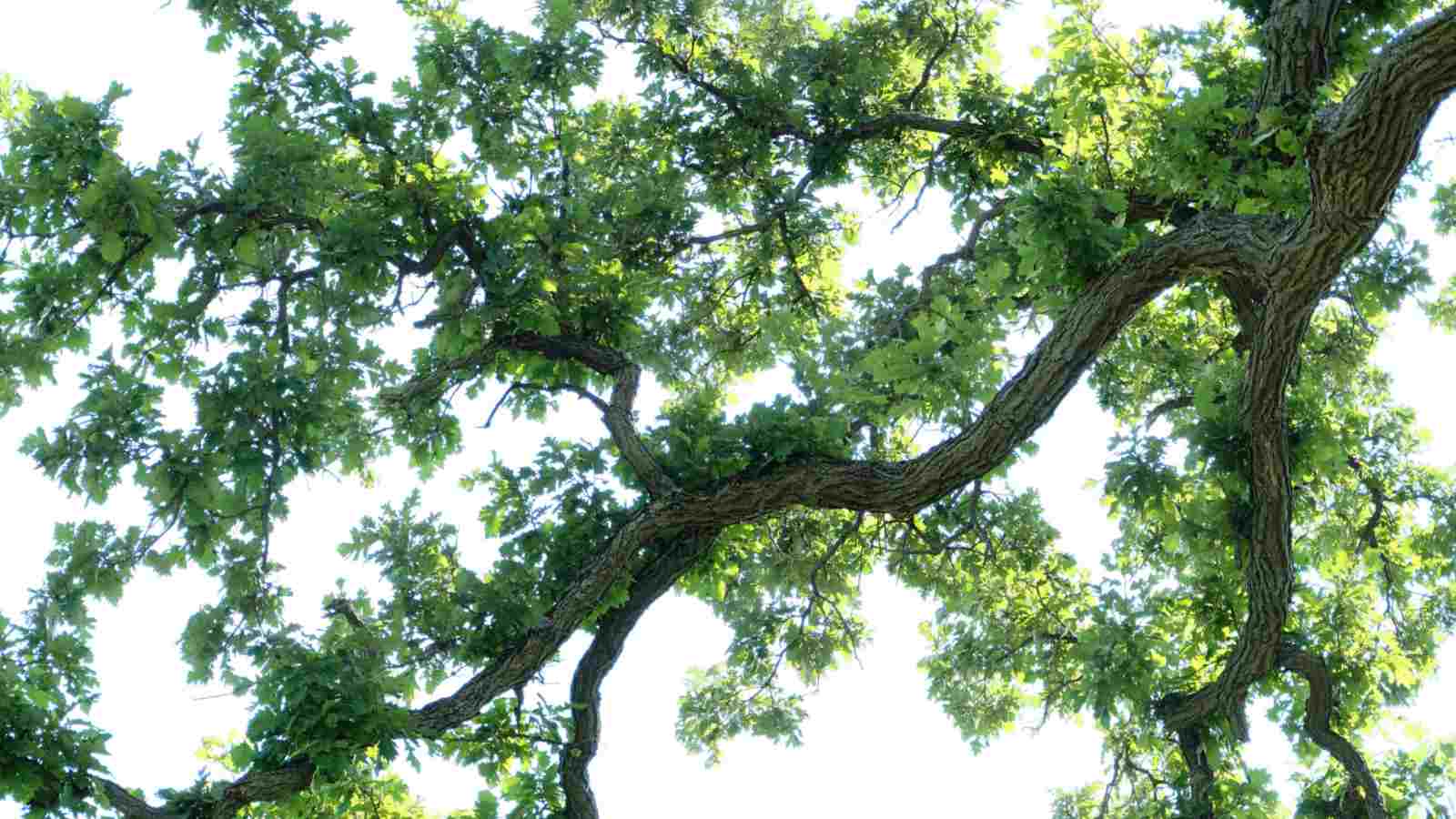
Lumber and Woodworking
White oak wood is highly prized in the woodworking industry due to its durability, strength, and attractive grain patterns. The strength, hardness, durability, and widespread availability of white oak have made its wood one of the most important hardwoods in the US and Iowa. Craftsmen and furniture makers utilize white oak timber to create exquisite pieces, ranging from cabinets and flooring to intricate carvings and boat-building. Its resilience and resistance to moisture make it ideal for outdoor applications, such as constructing decks and fences. The wood’s versatility and timeless appeal ensure its continued demand in woodworking and craftsmanship.
Wildlife Habitat and Forage
The white oak tree significantly contributes to wildlife habitats, providing shelter, nesting sites, and forage for many creatures. Woodpeckers, blue joys, small mammals, wild turkeys, white-tailed deer, and black bears eat the acorns. Birds, such as woodpeckers and owls, find refuge in its branches, while squirrels and other small mammals rely on its acorns as a vital food source. Deer, turkey, and other wildlife species browse on the tender shoots and acorns, making the tree an essential component of diverse ecosystems. In this way, the white oak tree fosters biodiversity and supports various forms of life within its surroundings.

Cultural Significance
Throughout history, white oak trees have held cultural significance in indigenous communities and folklore. They symbolize strength, endurance, and wisdom, often revered as sacred trees. Native American tribes utilized white oak wood to craft tools, baskets, and ceremonial items, honoring its versatile nature. The tree’s presence in cultural narratives and traditions emphasizes its enduring importance in the collective human consciousness.
Environmental Benefits
Beyond their tangible uses, white oak trees offer invaluable environmental benefits. Through photosynthesis, they absorb carbon dioxide and release oxygen, contributing to cleaner air and combating climate change. Their extensive root systems help prevent soil erosion and enhance soil quality. Additionally, these trees provide shade, reducing energy consumption in buildings during hot seasons. By planting and preserving white oak trees, we not only enjoy their practical uses but also contribute to a healthier planet and a more sustainable future.
Common Pests and Plant Diseases for White Oak Tree
As any passionate gardener knows, keeping your white oak trees healthy and vibrant requires a watchful eye and a bit of know-how. Let’s explore some common foes that might threaten your white oak’s well-being and equip you with the knowledge to protect your leafy companions from these adversaries.
Oak Wilt (Ceratocystis fagacearum)

Oak wilt is a notorious disease affecting several oak species, including the white oak. Caused by a fungus, this disease disrupts the tree’s vascular system, leading to wilting and, ultimately, death. Early symptoms include wilting leaves that turn brown around the edges. Preventative measures like avoiding pruning during the growing season and proper sanitation can curb its spread. If oak wilt strikes, prompt action is essential, including removing infected trees and avoiding root grafts between healthy and infected trees.
Gypsy Moth (Lymantria dispar)
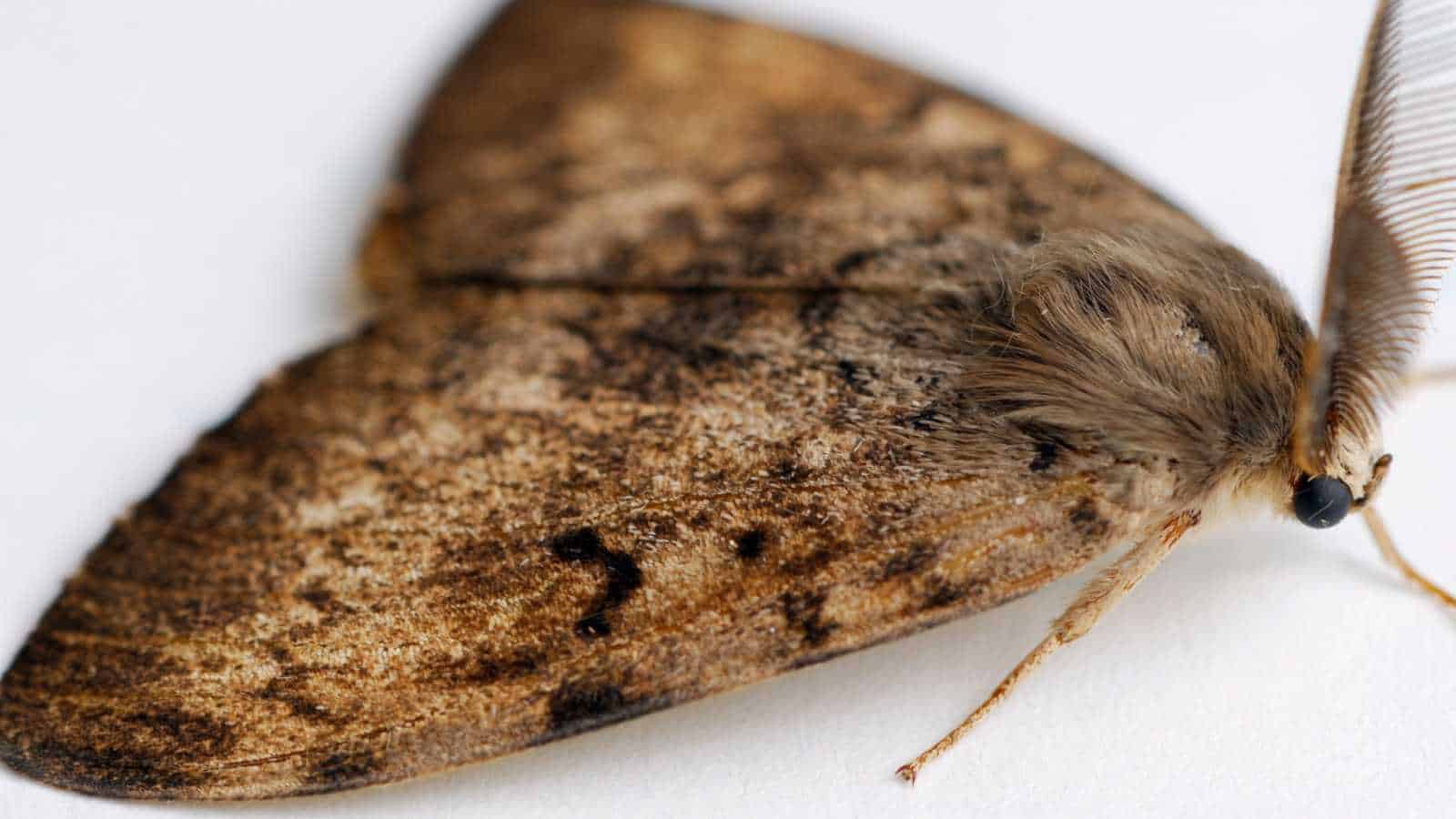
Gypsy moths, while seemingly harmless, can wreak havoc on white oak trees. The caterpillars are voracious eaters, defoliating entire trees in a short span. Keep an eye out for egg masses on tree trunks and branches, removing them before they hatch. Natural predators like birds and certain insects can help control their population. If an infestation occurs, consider biological control methods like introducing parasitic wasps, which target gypsy moth caterpillars.
Anthracnose
Anthracnose, a fungal disease, manifests as dark, irregular lesions on leaves, causing them to wither and fall prematurely. This disease often appears during cool, wet weather. To minimize its impact, practice good sanitation by removing fallen leaves promptly. Fungicidal treatments can be employed in severe cases. Additionally, ensuring proper air circulation by pruning the tree’s canopy promotes quick drying of leaves after rain, reducing the risk of anthracnose.
Two-Lined Chestnut Borer (Agrilus bilineatus)
This destructive beetle targets weakened or stressed white oak trees, burrowing into their bark and disrupting the flow of nutrients. Look out for D-shaped exit holes and wilting foliage as signs of infestation. To prevent attacks, maintain your tree’s health through proper watering, mulching, and avoiding unnecessary pruning during beetle activity periods. If your white oak is stressed, consider consulting an arborist for professional advice and appropriate treatments.
Powdery Mildew
Powdery mildew, a common fungal disease, presents as a powdery white substance on leaves, inhibiting photosynthesis and stunting growth. To discourage its growth, ensure your white oak tree receives adequate sunlight and maintains good air circulation. Regularly prune to remove crowded or crossing branches, allowing sunlight to penetrate the canopy. Fungicidal sprays, particularly those containing neem oil or potassium bicarbonate, can effectively manage powdery mildew.
Common Plant Problems and Solutions for White Oak Tree
Growing a healthy white oak tree is a rewarding experience, but it does come with its fair share of challenges. Let’s explore some common problems white oak trees might face and equip you with practical solutions to nurture your leafy companions back to health.
Yellowing Leaves and Poor Growth
One common issue many gardeners encounter is yellowing leaves and stunted growth in white oak trees. This could be due to nutrient deficiencies, often caused by compacted soil that restricts root growth. To address this problem, consider aerating the soil around the tree to improve its oxygen intake and nutrient absorption. Applying a balanced fertilizer in early spring can replenish the lacking nutrients, promoting healthy leaf color and robust growth.
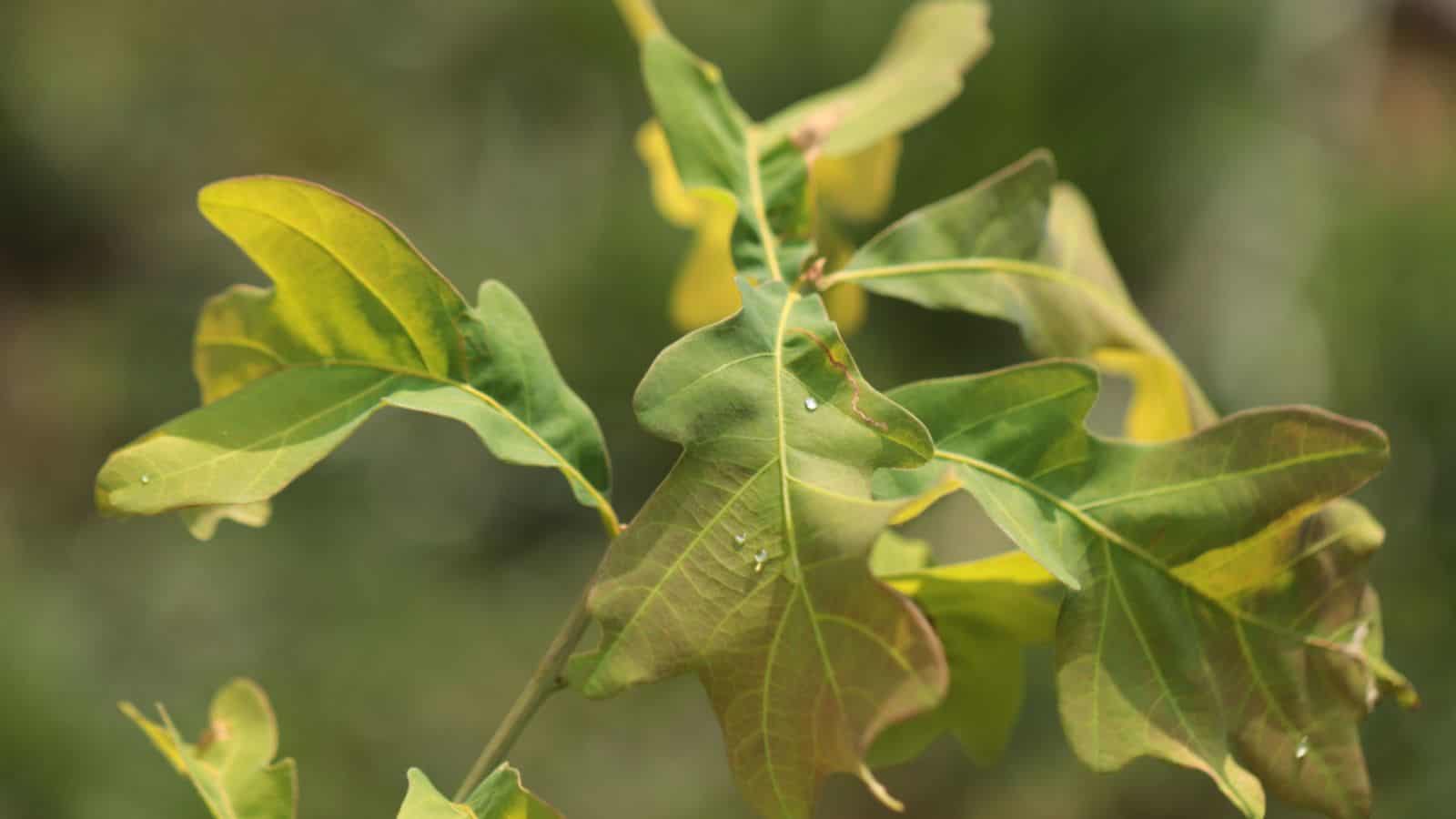
Leaf Scorch
Leaf scorch, characterized by browning and drying out of leaf edges, is a concern, especially during hot, dry weather. It’s typically caused by insufficient water uptake compared to the rate of water loss through leaves. To combat leaf scorch, ensure your white oak tree receives regular deep watering, especially during dry spells. Mulching around the tree’s base helps retain soil moisture, creating a more favorable environment for the tree’s roots. Additionally, consider providing temporary shade, such as burlap screens, during intense heatwaves to reduce water loss through leaves.
Root Rot
Root rot is a fungal disease that affects the root system, causing wilting, poor growth, and eventual death of the tree. It often occurs in waterlogged or poorly drained soils. To prevent root rot, ensure your white oak tree is planted in well-draining soil and avoid overwatering. Properly mulching the tree’s base and providing adequate space between trees enhance air circulation, reducing the risk of fungal infections. If root rot is suspected, consulting an arborist can help diagnose the issue and recommend appropriate treatments.
Other Tree Guides from Planet Natural:
Complete Guide to Plant, Grow, and Care for Red Oak Trees
23 Best Fast-Growing Trees For Your Yard (Complete Guide)




